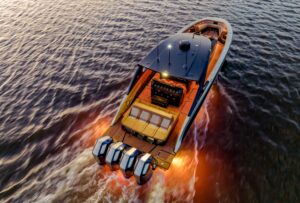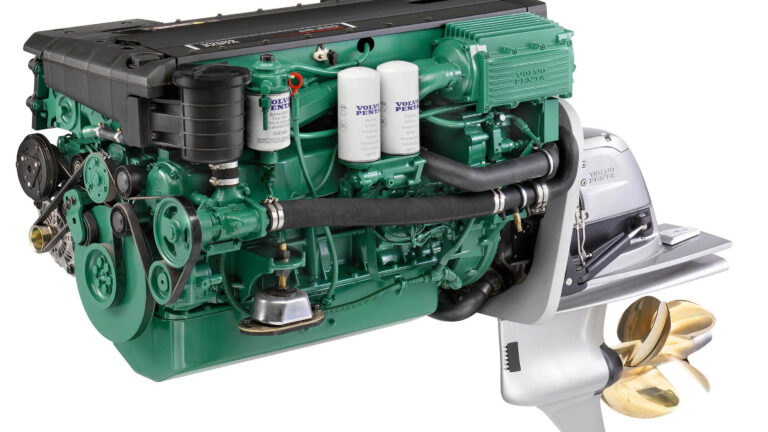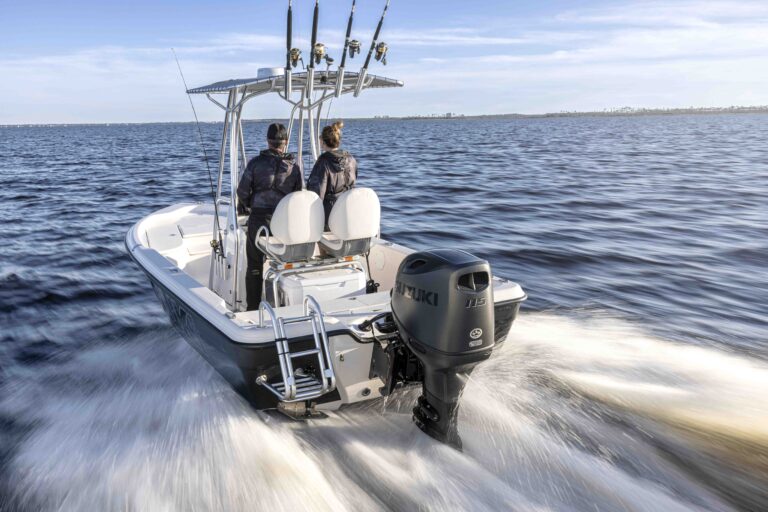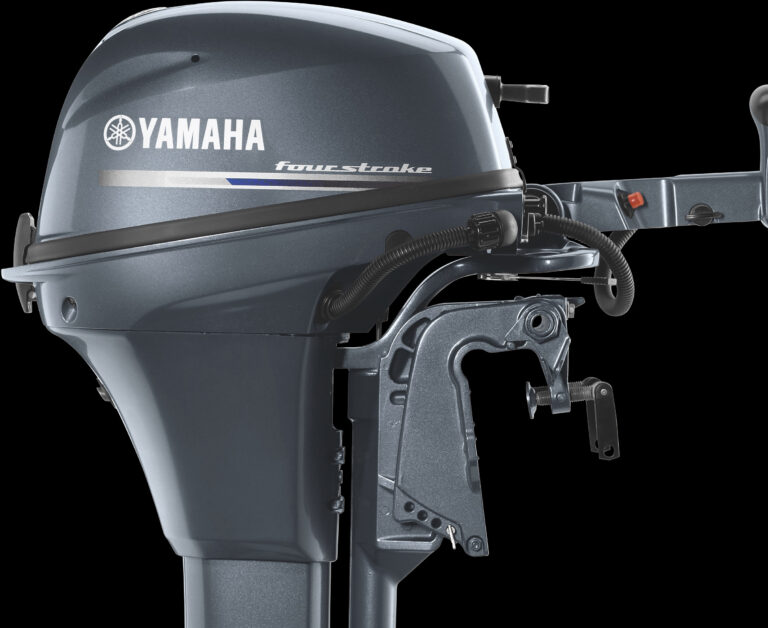
Just off the Maas River in the Netherlands is the tiny municipality of Maasbracht, sandwiched within a thin strip of Dutch land between Belgium and Germany. The manufacturing facility of Linssen Yachts and its internal harbor share space here with a large showroom, trying to tempt the owners of all the steel-hulled recreational craft and converted workboats in this region where fiberglass is as uncommon as hen’s teeth.
The elegant, cavernous showroom is more like a high-end car dealership than a boatbuilding facility. Several new and late-model Linssens were on display during my visit. A catwalk let me view the boats from above, with steps to each model on the showroom floor. Longtime marketing and communications director Paul Beelen promptly suggested a cappuccino. It was a highly civilized way to be introduced to a boat brand.
As we walked to the first of Linssen’s three production lines, Beelan said the yard builds and sells 60 to 70 steel yachts annually, spread across six models from 30 to 55 feet. At any given time, about 35 boats are in Maasbracht in various stages of construction. Owners can take delivery here or have the their boat towed to a home port. Nearly all of the builder’s sales are in Europe, in the Netherlands and in Germany, France, Belgium and England.
Bonds of Steel
Steel construction is a different animal than fiberglass. There are no molds, no hand-layup, no vacuum-bagging and almost no discernible smell on the factory floor, minus the occasional, slightly copperish odor as welders put the vessels together.
The steel, neatly stacked, arrives at the facility with components already prepped by CNC laser cutters and labeled with information the 110 employees need to proceed with the build. The yard has three production lines, split by size and model, where the hulls are built in three sections: keel, hull and superstructure. The hulls and superstructures are built in wheel-mounted jigs.
After the hull plating is welded, a longitudinal and transverse grid is welded to the sole. “This allows for flexible sides and for the grid to carry the stress onto the more robust parts of the vessel,” Beelen says. Then the three sections meet like a jigsaw puzzle in the middle of the line, with a laser-guided system built into the floor ensuring an exact match.
On smaller models, from 30 to 40 feet, 5 mm steel is used for the hull and keel, and 4 mm is used for the superstructure. For the rest of lineup, 6 mm steel is used for the hull and keel, and 4 mm to 5 mm is used for the superstructure. A small amount of aluminum is added on the swim platform, some hatches and the compressed natural gas box, which is at the stern.
The timing of each position on the line is exact. Each boat is in three positions on the line (four for larger boats) and moves every eight days. So smaller boats have a 24-day build time, and larger boats take 32 days to complete the process.


Perfecting the Hull
With welding complete, the boats are wheeled into a hangar to commence shot-blasting. This method not only eliminates all visible welds, but also cleans any residue from the build process. Gaps are filled, and any hull imperfections are fixed, to prepare for the first of several coats of primer. I walked past boats that looked impeccable but were being meticulously inspected, some with filler to perfect the hull shape. In total, the boats get three layers of a base gray primer, with a double layer atop that, and are inspected between each coat.
The boats then enter the paint shop for three more layers of paint. All told, Linssen gives each hull eight layers, which Beelan says helps to ensure a durable finish.
Fitting Out
The hulls are then lined up on another production line, where components such as engines, heating and cooling systems, batteries and generators are lowered into place. Like the previous process, each hull spends an exact number of days at each step — Linssen refers to this as its Logicam flow system — from systems to woodwork.
Large pallets from the joinery shop, which is a few miles away, sit at the same level as the boat’s stern, all with numbered pieces that fit within the floor-integrated system. Even with the superstructure attached, modular construction ensures that the bulkheads and other components have enough room to fit through the cockpit and into the boat. One of the more impressive parts of the process is how the large, prefabricated bundles of wiring and harnesses drop into the boat from above, with virtually no wiggle room, ready to be put into service.
At this point, if a boat requires customization based on an owner’s request, the boat is allocated to another area. For the rest of the models, final inspections are made, and boats are fitted with an optional rope rubrail, a signature Linssen feature.
Final Impressions
As the company prepared to celebrate its 75th anniversary in 2024, its modus operandi of designing and building traditional steel Dutch boats had not wavered. While Linssen builds what can be described as utilitarian, functional craft, these boats are by no means entry-level or stodgy. Underneath the classic profile are modern systems and amenities: digital switching is now standard on all vessels, along with electrically actuated convertible tops that Linssen calls the Variotop.
Linssen was also among the cleanest and best-organized facilities I’ve had the pleasure of touring, a symbol of the builder’s unwavering pursuit of traditional Dutch excellence.












